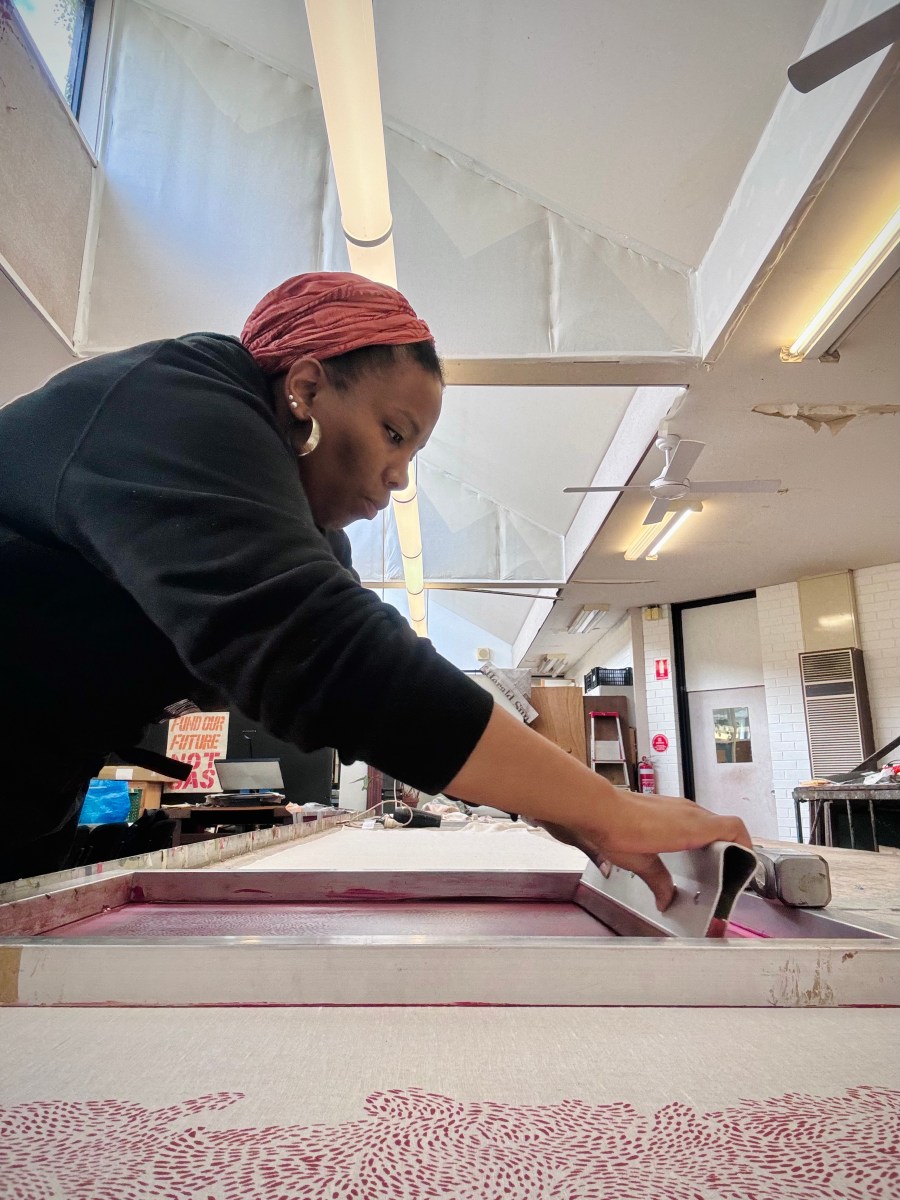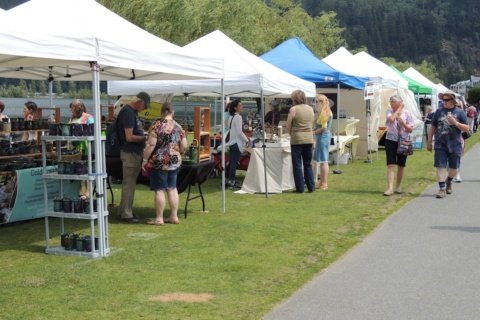Transcending the fashion industry and consumer culture, fashion as a concept presents a meaningful vehicle to explore oneself. As a form of self-expression that combines various elements of art, it can encompass a wide range of styles, designs and aesthetics that reflect individual tastes, societal norms, cultural and historical influences.
When the National Gallery of Victoria (NGV) announced the landmark exhibition, Africa Fashion, African diasporic textile and fashion industry practitioners in Victoria began gearing up for a moment to be seen and celebrated for their contribution as culture keepers within the art and fashion industry.
The touring exhibition is developed by the Victoria and Albert Museum (V&A), London, and curated by Dr Christine Checinska, Senior Curator African and Diaspora Textiles and Fashion at the V&A with Project Curator, Elisabeth Murray. On display are over 200 works – spanning fashion, textiles, adornment, photography, music and film. The exhibition celebrates the creativity, ingenuity and global impact of contemporary African fashion from the mid-20th century to the present day.
At the centre of Africa Fashion lie the makers who collide concepts to suit the wearer – whether that be a fashionista, consumer, admirer or the maker themselves.
The stories of diasporic makers often remain untold in the mainstream fashion industry. These narratives may originate from contemporary experiences or superficial aspects. They are ingrained in the makers’ DNA, softly speaking throughout their journey, steering towards a bridge between the tangible world and the realm that lies beyond.
Africa Fashion provides a wonderful backdrop to delve into the fascinating worlds of local practitioners. Two Melbourne-based textile artists, Muhubo Sulieman and Tab Sejoe, draw inspiration from their historical memories to create stunning pieces that bridge the gap between tradition and modernity.
Preserving heritage: the art of Muhubo Sulieman
Sulieman is a Somali artist, head weaver of Qaymi Arts & Craft and mother of three. Drawn to its multicultural atmosphere, she came to Australia in 2003 with her 10-month-old daughter and has called the suburb of Carlton in Melbourne home for 20 years.
Sulieman is a passionate advocate for preserving traditional crafts within the contemporary art scene and, similar to her grandmother, she embodies the qualities of a Qaymi – someone people go to when they need something made or fixed, especially of arts and craft nature. Recalling her grandmother’s exceptional skills, Sulieman says, ‘I grew up with my grandmother (my dad’s mother) and was always around her, they used to call her “Ashkira Qaymi” … everyone used to say that she was Qaymi and that her crafts were incredible; that if you wanted something done you should go to her.’
Reflecting on her roots, Sulieman remembers her grandmother’s teachings and techniques, guiding her as she creates traditional weavings and crafts. ‘I try to remember my grandmother, she taught me and she is the reason I can do what I can today. Whenever I’m creating a weaving or anything traditional, I think of her,’ she tells Artshub.
Her grandmother’s legacy lives on in every stitch, as Sulieman channels her wisdom and expertise into her work. Thus, keeping the spirit of those who came before her alive through art.
As Sulieman expertly weaves the base stitch of what will become an intricate rug, a natural bond between herself and her material emerges seamlessly. ‘Materials are very important to me,’ she says without missing a stitch.
The relationship Sulieman shares with her materials, especially the grass used in her weaving, is one of reverence and respect. In Somalia, each plant holds significance, and Sulieman follows traditional practices of harvesting and handling the grass with care to ensure its sustainability. The grass, essential for covering the Aqal (a traditional dome-shaped hut in Somalia) is meticulously maintained and woven, reflecting the intricate bond between nature, memory and ancestral traditions in Sulieman’s craft.
She draws attention to the similarities between the native Australian grass, poa labillardierei, and Somali grass (yaare yarre and qoromale). ‘You can see how similar they look compared to each other – you can barely tell the difference,’ she says. Through these observations, Sulieman celebrates the interconnectedness of traditions across cultures and the importance of maintaining these practices for future generations.
Through her art, Sulieman not only preserves the legacy of her ancestors, but also invites others to appreciate the intrinsic connection between memory, tradition and creativity that transcends time and borders. Her work is a testament to the enduring power of ancient traditions and the timeless beauty of weaving stories through art.
As part of Africa Fashion, Sulieman will be hosting a free all age workshop during the opening day celebration on 1 June at the NGV and her work will be available for sale in the NGV Design Store.
Unveiling the threads of identity: artistic journey of Tab Sejoe
A textile designer and artist, Sejoe brings elements of the natural world into urban and everyday living experiences through her hand-printed pieces.
Sejoe’s designs reflect her upbringing in Botswana as well as her life in Australia, where she first arrived at the age of eight. She focuses on a considered colour palette and a sensitive approach to design, materials and sustainability. She exclusively uses natural fibres such as linen and cotton, and prints with non-toxic water-based Permaset Aqua inks.
Sejoe encapsulates her artistic ethos in a single sentence, ‘I’m a lifelong storyteller through visual arts and like sharing my unique vision on life.’
Her journey with cloth began with dabbling in screenprinting on paper and fabric, while dreaming of becoming a fashion designer. In 2022, her path took a new turn as she delved deeper into the world of textiles as a medium of expression to help her to unlock something in her while formalising her knowledge. Sejoe registered to study the Textile Design and Development Course at RMIT. On her first day, a light bulb moment occurred as she realised the profound connection between weaving and cloth. She thought, ‘“Oh my God, weaving is cloth!” That is what cloth is. It is made by humans weaving threads together,’ she tells ArtsHub.
This newfound understanding unlocked a flood of memories from her past, particularly of her grandmother and aunties engaging in the art of creating fabric. ‘My grandma used to sit outside under the shade with a bag filled with orange sacks and plastic bags. She would weave that into big floor rugs … she would take all that plastic trash and … give it a new life’, Sejoe recalls.
Watching her grandmother’s sustainable practices left a lasting impression on her.

When asked to talk about her colour palette, Sejoe says, ‘That’s an easy one. Everywhere I go people are like, “you have a sense of colour”.’ As a self-proclaimed ‘creature of habit’, Sejoe wears a colour palette that reflects the muted tones found in nature. Terracotta, browns, clay pink and olive green dominate her fashion choices, serving as an homage her homeland of Botswana. These earthy hues act as portals to ancient connections, grounding her in the rich history and traditions of her roots.
In her work, Sejoe pays tribute to her grandmother’s legacy through the subtle yet powerful hashtag, #MonatesDream. Monate, her grandmother’s name, symbolises a dream that Sejoe continues to nurture and honour through her art. ‘I always feel like I’m working on Monate’s dream whether it’s creative or otherwise… I guess that’s honouring or celebrating my ancestors’.
She sculpts memories through cloth in her recent body of work, comprising a variety of printed rolls of fabric. Sejoe’s creations deeply resonate with the essence of her Botswana roots. From patterns named “Dung Beetles” to “Acacia Swirl” – each textile roll draws from the landscapes that shape her identity. Her creations weave a tapestry reflecting the arid landscapes of southern Africa, intertwining the spiky structures that symbolise protection and water conservation. Just as the wattles of Australia echo Botswana’s thorns, Sejoe’s designs draw inspiration from their shared resilience showcasing nature’s adaptive beauty in harsh environments.
In crafting this collection, ‘I knew very distinctly the feeling that I wanted,’ she says. ‘That warm dry air… I remember distinctly the colours that I wanted – earthy, muted tones’.
As an African creator, she consciously defies traditional expectations, straying from the Western gaze’s predefined notions of African prints. Her creations are a rich texture of her lived experience, embodying the Africa she knows intimately.
Read: British designer Dame Zandra Rhodes donates Uluru Collection to Powerhouse
While Sejoe may be unaware of the impact of her work on the wider fashion and textile industry, her hope is that it ‘could be a unique point of view’. She says, ‘In all honesty, I make my work for myself and the bonus is that people like it and want it.’ It’s a sentiment that underscores her mission to share her story through each piece she sends into the world. As her designs find new homes, they intertwine with the narratives of their owners, weaving a fresh and authentic perspective that echoes across time and space.
From the subdued earth tones to motifs mirroring the fauna and flora of her homeland, Sejoe’s work serves as a vessel for memories – both her own and those who came before her. This authenticity defines her aesthetic, positioning her as a contemporary African designer who channels her personal narrative into her art.
As part of Africa Fashion, Sejoe will engage with the NGV Learn team and her work will be available for sale in the NGV Design Store.
Africa Fashion exhibition is on view from 31 May at NGV International.

